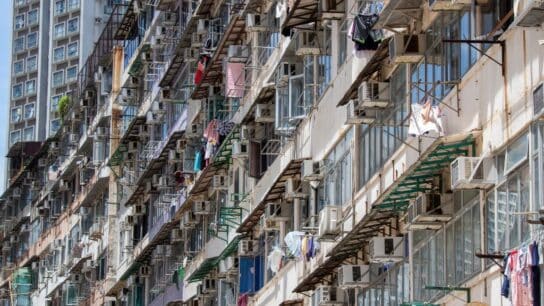Nestled in the highlands of Guatemala, Totonicapán is home to a communal forest that has sustained its Indigenous Maya K’iche’ communities for centuries. Spanning 22,000 hectares, the forest embodies a harmonious relationship between people and nature. As traditional stewardship faces challenges like illegal logging and climate change, innovative conservation initiatives are emerging to preserve this critical ecosystem while creating sustainable livelihoods.
—
By EcoLogic Development Fund with information compiled by Lucy Calderón.
At the heart of these efforts is the governance of the 48 Cantons, led by the Junta Directiva de Bienes y Recursos Naturales. Their community-driven approach has historically protected the forest, but increasing pressures have required collaboration with organizations like EcoLogic Development Fund. Together, they are forging solutions that blend tradition with innovation, ensuring environmental and economic resilience.
The conservation story of Totonicapán – a city in Guatemala home to half a million people – begins with its people’s relationship with the land. EcoLogic’s agroforestry systems, which integrate trees into agricultural practices, reflect this connection. Women farmers grow peaches, apples, and other crops alongside native trees, reducing the need to clear forests for farming. This approach enhances biodiversity, improves soil health, and provides a sustainable source of income for households.
Protecting a National Treasure: Pinabete Plantations
Agroforestry also serves as a bridge to larger conservation goals. By reducing reliance on forest resources, these systems complement efforts to protect Totonicapán’s communal woodlands. They demonstrate that agricultural productivity and ecological preservation can coexist, offering a scalable model for sustainable land use.
As conservation efforts evolve, they must also address species-specific challenges. The pinabete (Abies guatemalensis), a conifer endemic to Guatemala, has long been threatened by illegal harvesting. In response, EcoLogic and local farmers have developed sustainable plantations, where pinabetes are cultivated for legal sale and value-added products like holiday wreaths.
This initiative safeguards wild pinabete populations and creates economic opportunities for farmers, exemplifying how conservation can be economically viable and ecologically impactful. “Planting pinabetes is very important and is a source of work. We can sell trees and twigs, which helps us increase our income. There is a great demand. I hope more communities will join us,” José Tahay, who tends to his pinabete plantation with pride, told Earth.Org.
Improving Lives, Protecting Forests: Cleaner Stoves
The widespread reliance on firewood for cooking in Totonicapán has posed a significant challenge to human health and forest conservation. EcoLogic’s partnership with StoveTeam International helped address this issue by building and distributing fuel-efficient stoves to families in need. These stoves reduce firewood consumption by half, alleviating pressure on forests while improving indoor air quality.
For beneficiaries like Verónica Margarita Gutiérrez, the change is profound: “With this stove, everything has changed. My home no longer fills with smoke, and I can cook meals in half the time it used to take. It’s not just about convenience – it’s about breathing easier and knowing that we are using less wood, which helps protect our forests for the future,” she told Earth.Org.
By addressing basic household needs, the stove program underscores how conservation initiatives can simultaneously improve the quality of life and protect the environment.
A Sustainable Future: Ecotourism and Economic Incentives
Ecotourism has emerged as another innovative solution, connecting conservation with economic opportunity. The Caxaj community’s Caballo Blanco Ecological Park showcases Totonicapán’s natural beauty through guided trails and educational programs. Visitors can spot various bird species, collect edible wild berries, and even forage for mushrooms.
For the Caxaj community, Caballo Blanco is more than just a tourist attraction – it is a testament to their commitment to sustainable forest management. By opening the park to visitors, the community generates income and fosters a deeper appreciation for the forest’s ecological and cultural significance.
The park’s success results from a collaborative effort between the Caxaj community and local government. In recognition of the community’s conservation efforts, the municipality of Totonicapán provides annual support for reforestation through tree seedlings. This partnership, combined with economic incentives, ensures that the forest remains healthy and vibrant for future generations.
A Holistic Approach: Interconnected Solutions
The success of these initiatives lies in their interconnectedness. Agroforestry reduces dependence on forests, Pinabete plantations address species-specific challenges, fuel-efficient stoves reduce deforestation, and ecotourism showcases the value of preservation.
Together, these efforts form a cohesive strategy that addresses both the environmental and economic needs of Totonicapán. Here, the forest is more than a resource. It is a legacy nurtured by generations and protected for those to come. By integrating tradition with innovation, the people of Totonicapán are ensuring that their forest remains a source of life, inspiration, and sustainable progress.
Featured image: EcoLogic Development Fund/Lucy Calderón.
—
About the author: The Ecologic Development Fund works to restore ecosystems and protect biodiversity while empowering rural and indigenous communities in Central America & Mexico. Lucy Calderón is a Guatemalan journalist specializing in health, science, and environmental reporting, with award-winning work on climate change.
This story is funded by readers like you
Our non-profit newsroom provides climate coverage free of charge and advertising. Your one-off or monthly donations play a crucial role in supporting our operations, expanding our reach, and maintaining our editorial independence.
About EO | Mission Statement | Impact & Reach | Write for us













